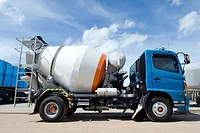Solving Manufacturers' Needs for Productivity and Efficiency

Recently, PCI Magazine asked some leading players in coil coatings to comment on the benefits, current status, markets and other information about coated coil. Following are comments from Michael Pcolinski, business manager, BASF Industrial Coatings Solutions Business for North America; Dr. Tony Gichuhi, R&D manager/scientist, HALOX; and John Mitchell, president, The National Coil Coating Association (NCCA).

What are the factors driving demand and change in the coil-coating industry?
Pcolinski says, "The challenges facing coatings manufacturers in North America reflect the challenges faced by their customers, especially in the coil-coating and automotive markets. Global competition, particularly from developing regions - notably China and the Asia-Pacific region - will continue to exert pressure on costs and productivity in North America. In response, coatings makers will have to develop coatings and application processes that meet their customers' needs for cost efficiency."At the same time, the end-users of coating products continue to demand high quality, as measured by finished appearance and durability. The demand for quality is the result of increasingly demanding and sophisticated consumers, including homeowners and car owners.
"All of this means that the pressures on coatings companies will continue to grow. To survive and to remain profitable, they have to continuously improve their productivity and efficiency, just as their customers - the OEMs and manufacturers of finished goods - must do."
Mitchell says, "There are not necessarily cost savings associated with the change to prepainted metal, but cost savings enabled by the change that need to be reviewed. In other words, some of the greatest benefits will be derived in other areas of manufacturing. The use of prepaint solves manufacturing issues by increasing productivity, reducing manufacturing cycle time, providing faster throughput, producing better yields and reducing environmental problems.
"When you eliminate a post-finishing operation, you free up floor space. Additionally, since work-in-process inventory is reduced, the demands for additional floor space are correspondingly reduced. Production capabilities can grow without adding exclusive manufacturing space." (See sidebar.)

What factors are driving the industry?
Pcolinski says, "Among the factors driving demand and change in the coatings industry are the need to reduce energy consumption and the need to increase application efficiency for coil and extrusion coatings. Both factors are closely interrelated. The costs to cure the coating on the substrate in a typical coil-application process have risen dramatically as the costs of energy have gone up, with little sign of relief."The cost to cure the coating on the substrate in a typical coil application process is significantly affected by the rising costs of energy, so innovation by coatings companies includes the development of application processes that help their customers save money, time and energy - without compromising product performance and quality.


Where are the growth areas for coil coatings?
Pcolinski says, "More stringent emissions regulations, especially in Europe and North America, are driving coatings companies to develop environmentally friendly technologies - such as low-VOC (volatile organic compounds) and low-HAPs (hazardous air pollutants) products - and more eco-efficient application processes for end-users."Gichuhi concurs. "New product development for the coil-coating market is driven by a need to meet stricter VOC and environmental demands. Liquid coatings will continue to be predominant in coil coatings since alternative technologies are so far incapable of achieving the thinner films (0.5-1.0 mils) desired. With growing demands for durability and weathering resistance, fluoropolymers will gain market share, as they often do not require a UV absorber or a sterically hindered amine light stabilizer. Powder-coating coil lines will make some inroads if their processing speed and cure can be optimized. Waterborne coil coatings will continue to lag behind, as their performance remains marginal."

"As an alternative, powder looks like the most logical step from wet paint to solve environmental problems, but it is limited in its environmental friendliness. Powder solves one environmental problem - the elimination of VOCs. However, powder leaves open the issue of cleaning, pretreatment and the disposal of sludge. Prepaint addresses environmental problems, including air, water, solvents and waste disposal.
"Prepainted metal is cleaned and treated in the flat, effecting better cleaning and pretreatment, and correspondingly, a higher-quality product.
"Certain applications can benefit from the unique advantages of both prepaint and powder technologies. The coil-coating process can be utilized to clean/pretreat and prime, providing a superior surface for subsequent powder coating. This combination meets both air- and water-compliance issues and provides a superior product for corrosion resistance and adhesion. This uses the technological advantages of both prepaint and powder.
"The third part of the powder question is its use in the coil-coating industry. Recently developed application methods can be used to coat a variety of substrates heretofore unavailable via the prepaint method, such as uneven surfaces, or perforated or expanded metal. As a coating method, powder is a new technology in the coil-coating industry."

How does the overall corrosion resistance of coil coatings compare to other systems?
Mitchell says, "Unquestionably, the corrosion resistance is better using prepainted metal than metal from a typical post-painted product. Due to the superior cleaning and treating of the strip during the coil-coating process, the priming of both sides and the painting of both sides, prepainted metal has better cut-edge corrosion resistance than post-painted metal. A fine line of corrosion may develop on the cut edge of prepainted metal, but the resistance to under-film corrosion creepage will be much better than with post-painted metal. The corrosion resistance is also better where nicks and scratches occur."


Where is the current market and where do you see an increase in market focus for coil coatings?
Mitchell reports, "According to NCCA statistics, the Building & Construction category accounts for about two-thirds of the market applications for coated coil." (See pie chart, page 67.)Gichuhi says, "The market size for coil coatings appears to trend steel production and exports, which in turn revolves around building and construction. The majority of coil-coated metal is used in heating, ventilating, and air-conditioning (HVAC) units, roofing, siding, building fascia and exterior paneling."
Pcolinski says, "In the metal-construction industry, increasingly stringent environmental regulation and a desire to lower the costs of cooling and heating combine to boost the attractiveness of "green" building products, including exterior coatings used for roofs and walls.
"In recent years, the metal construction industry and its coil-coating suppliers have been moving toward so-called "cool coatings," which offer high reflectivity in medium and dark colors. "Cool" roofs, in particular, have gained dramatically in popularity for both commercial and residential applications (especially, but not exclusively, in hot, sunny areas of the United States, like the Sunbelt states and California) since BASF launched its ULTRA-Cool® coatings in 2001. The higher cost of a "cool" metal roof (compared to traditional roofing materials like asphalt) is offset in the long term by lower energy costs and a much longer lifespan."
Does nanotechnology have any future application in coil coatings?
Pcolinski says, "Nanotechnology is a topic of growing interest in many industries, and the coatings industry (including coil coatings) is no exception. In automotive coatings, for example, true nanotechnology is already in limited use."Nanotechnology does offer the potential for real product improvements, but the term "nanotechnology" is often misused or misunderstood. BASF is engaged in major nanotechnology research, and we want our customers to understand the potential benefits of nanotechnology - but not to be misled into false or premature expectations. When we talk about our commitment to helping our customers be more successful, we are talking about developing and applying the most cutting-edge technologies available that deliver real value - including nanotechnology, if and when it's appropriate."

10 Signs a Manufacturer Should Consider Prepainted Metal
Converting from in-house post-painted metal to outsourced prepainted metal can save manufacturers cost, time and hassles. Here are 10 indicators a manufacturer should consider for using prepainted steel or aluminum:-
1) In-house paint-shop expenses are growing.
2) Need to lower internal operating costs.
3) Plant capacity must be increased.
4) Coating quality needs to be improved.
5) Downsizing and or combining of plants is taking place.
6) New product models are being considered.
7) Manufacturing bottlenecks are reducing productivity.
8) When it is time to update or replace the paint line.
9) A strategy of outsourcing is being implemented.
10) New fabricating or material-handling equipment is being evaluated.
Prepainted metals offer many cost savings and quality benefits. Even when joined, formed, cut and handled, coil-coated metals offer superior quality over many post-painted alternatives. Manufacturers can get help with analyzing if prepainted metals are right for their products and can get a free cost-comparison form by visiting www.coilcoatinginstitute.org or calling the NCCA at 216/241.7333.
For information on converting to prepainted metal, visit www.coilcoatinginstitute.org or call the NCCA at 216/241.7333.
More information on metal coatings is available at www.basf.com.
Visit www.halox.com for more about corrosion inhibitors used in coatings for coil.
Looking for a reprint of this article?
From high-res PDFs to custom plaques, order your copy today!







